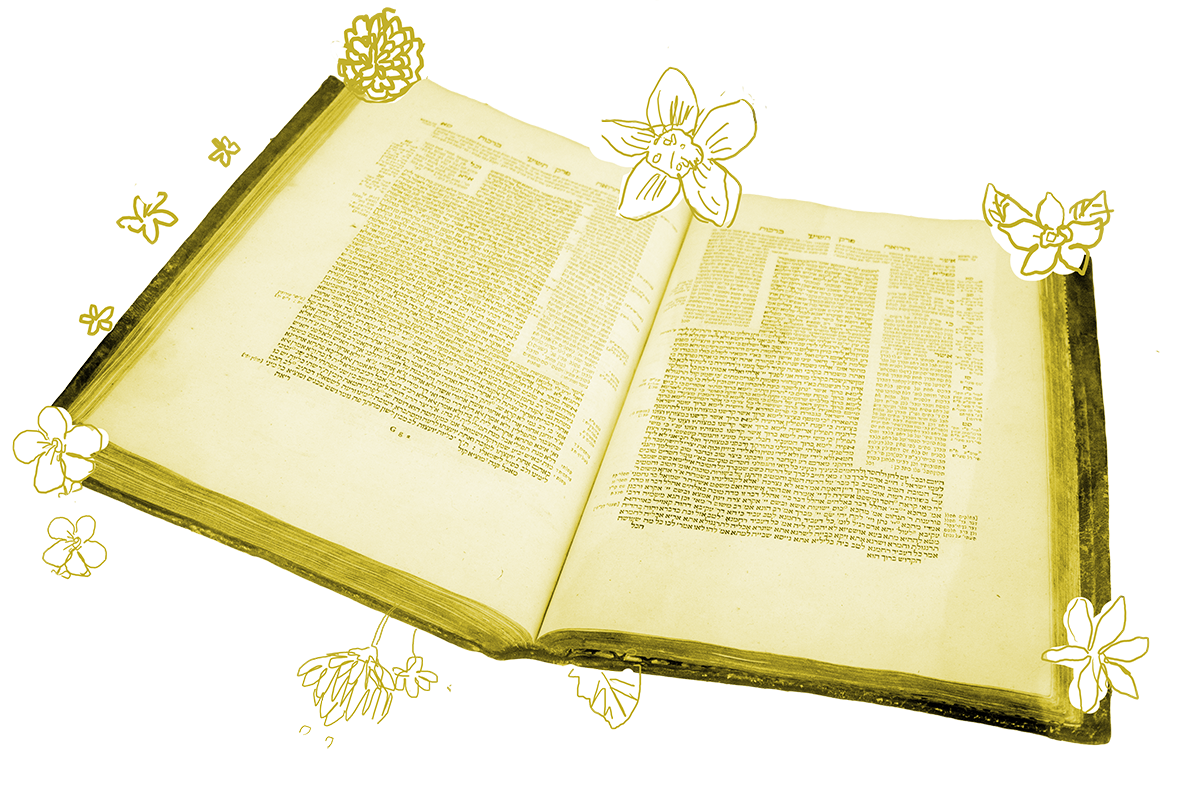A central tenet of the laws of kashrut (Jewish dietary practices) is the separation of milk and meat. The rule is derived from a verse that appears three times in the Torah: “You shall not boil a kid in its mother’s milk.” According to the Talmud (Kiddushin 57b), the threefold appearance of the verse (Exodus 23:19, Exodus 34:26, and Deuteronomy 14:21) creates three distinct prohibitions:
One teaches the prohibition against eating, and one the prohibition against benefit, and one the prohibition against cooking.
A beraita on today’s daf presents some related rules that, at first glance, might cause you to raise your eyebrows:
One may not knead dough with milk, and if he kneaded the entire loaf is forbidden because he will become accustomed to sin.
With your help, My Jewish Learning can provide endless opportunities for learning, connection and discovery.
Similarly, one may not smear over an oven with (the fat of an animal’s) tail, and if he did smear, the entire loaf is forbidden until he heats the oven.
If the beraita had merely forbidden cooking dough that had been kneaded with milk in an oven that had been smeared with animal fat, there would be no surprise, since that would be a clear violation of the prohibition on cooking meat and milk together. But that is not what the beraita says. Rather, it forbids making bread dairy by mixing milk into the dough and it forbids making bread meat by baking it in an oven tempered by the fat of an animal. But there is no biblical prohibition on mixing grains with either milk or with meat. So what is the problem here?
Like today, bread was a staple in rabbinic times and was served at all meals. In fact, according to the rabbis, having bread at the table is what makes something a meal in the first place. The rabbis were therefore concerned that people would accidentally serve dairy bread at meat meals and vice-versa, so they made the rule that bread had to be pareve (neither meat nor dairy). Doing so, as the beraita suggests, keeps people from sinning — i.e. violating the biblical prohibition on mixing meat and milk. The practice was therefore to always bake bread so it could be eaten at any meal.
The legal codes make two exceptions to this rule (see Shulchan Aruch Yoreh De’ah 97:1). The first is for small quantities of bread that can be eaten in one sitting, and the second for loaves made in an unusual shape. The logic here is that if you make a small amount of dairy bread and consume it right away, or if you make it in a shape that identifies it as dairy bread, there is no reason to be concerned that it will be eaten with a meat meal.
Rabbi Moshe Isserles, in his commentary on this rule, gives his nod of approval to two specific customs: the baking of dairy bread for the holiday of Shavuot and challah for Shabbat with fat in them. He permits this because they are prepared in a small quantity, i.e. an amount that will be eaten at a particular meal, and because of their distinct shape. So if your family has (or wants to adopt) either of these traditions, there is no need for concern.
The use of shapes to distinguish dairy from non-dairy products is alive and well today. In Israel, it is traditional for cheese bourekas to be produced in a triangular shape to distinguish them from non-dairy bourekas, which are made in rectangles. This helps ensure that a person who wants potato bourekas with their corned beef sandwich won’t take a cheese one by mistake.
Read all of Bava Metzia 91 on Sefaria.
This piece originally appeared in a My Jewish Learning Daf Yomi email newsletter sent on May 29th, 2024. If you are interested in receiving the newsletter, sign up here.



